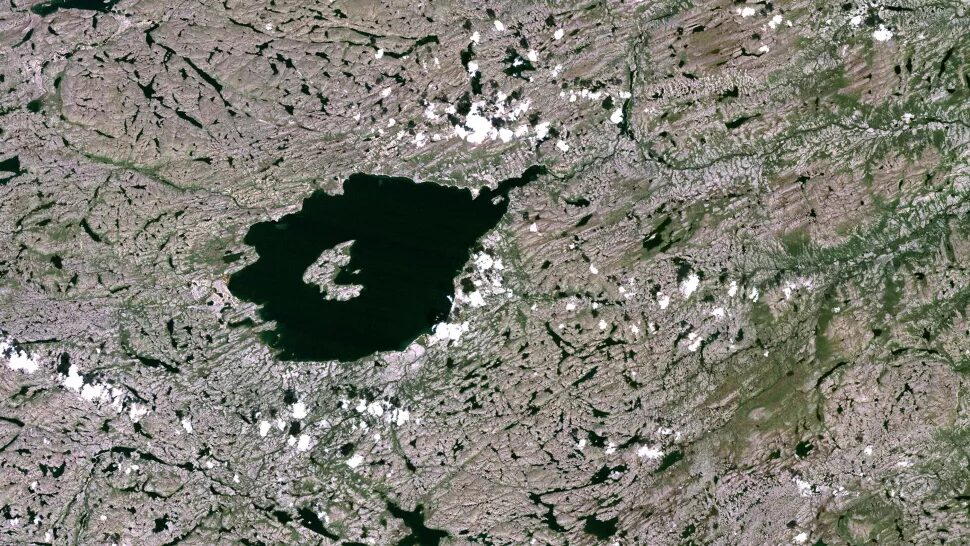
© Planet Observer/Universal Images Group via Getty ImagesThe rock was found within the Mistastin impact crater in Labrador, Canada, shown here in this satellite image.
It's confirmed: The hottest rock ever discovered in Earth's crust really was super-hot.
The rock, a fist-sized piece of black glass, was discovered in 2011 and first reported in 2017, when scientists wrote in the journal
Earth and Planetary Science Letters that it had been formed in temperatures reaching 4,298 degrees Fahrenheit (2,370 degrees Celsius), hotter than much of the Earth's mantle. Now, a new analysis of minerals from the same site reveals that this record-scorching heat was real.
The rocks melted and reformed in a meteorite impact about 36 million years ago in what is today Labrador, Canada. The impact formed the 17-mile-wide (28 kilometers) Mistastin crater, where Michael Zanetti, then a doctoral student at Washington University St. Louis, picked up the glassy rock during a Canadian Space Agency-funded study of how to coordinate astronauts and rovers working together to explore another planet or
moon. (Mistastin crater looks a lot like a moon crater and is often used as a stand-in for such research.)
The chance find turned out to be an important one. An analysis of the rock revealed that it contained zircons, extremely durable minerals that crystallize under high heat. The structure of zircons can show how hot it was when they formed.
But to confirm the initial findings, researchers needed to date more than one zircon. In the new study, lead author Gavin Tolometti, a postdoctoral researcher at Western University in Canada, and colleagues analyzed four more zircons in samples from the crater. These samples came from different types of rocks in different locations, giving a more comprehensive view of how the impact heated the ground. One was from a glassy rock formed in the impact, two others from rocks that melted and resolidified, and one from a sedimentary rock that held fragments of glass formed in the impact.
